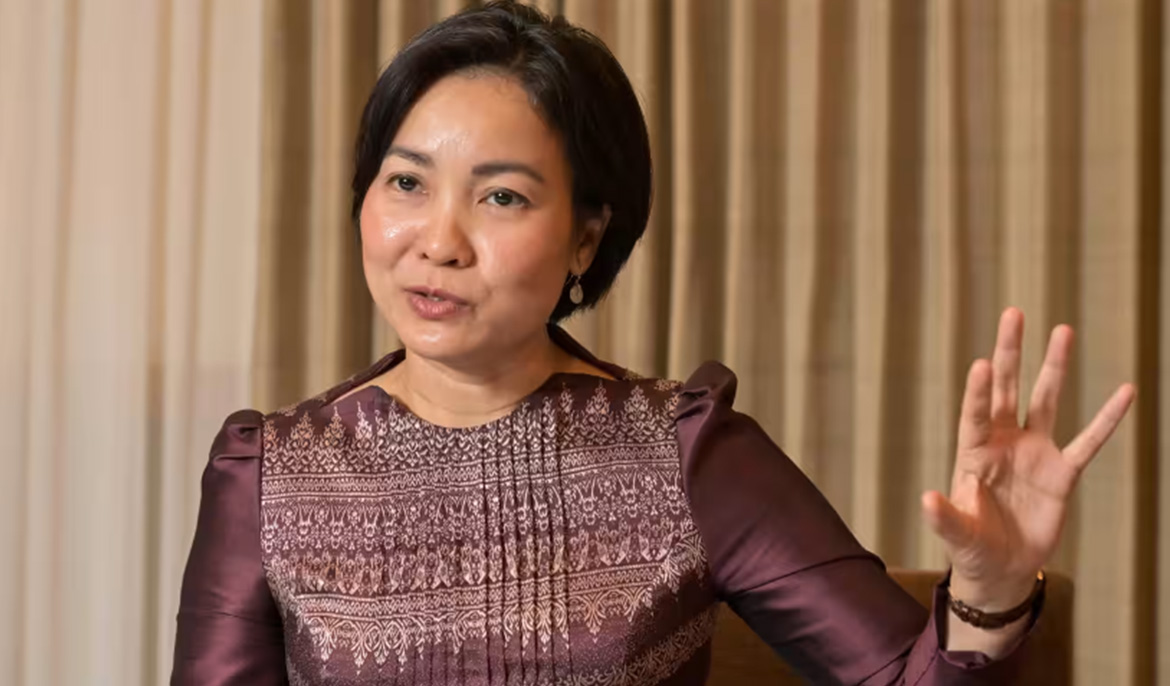TOKYO — Cross-border QR code payments made through Cambodia’s Bakong digital financial system are set to boost the use of the Southeast Asian nation’s riel currency, the governor of its central bank told Nikkei Asia on Friday.
Over 80% of Cambodia’s economy still operates with the U.S. dollar as part of a dual-currency system, with authorities pushing for the riel to play a greater role. “The proportion [of the riel used in] digital transactions is higher,” Chea Serey, governor of the National Bank of Cambodia, said on the sidelines of Nikkei’s Future of Asia conference in Tokyo.
Total digital payments made through the Bakong system, named after a famous Khmer temple at the historic Angkor Wat site, had by last year expanded to a value of $70 billion from its launch in 2020 — about double the country’s gross domestic product. While domestic Bakong transactions can be made in riel or dollars, the Cambodian currency accounted for $20 billion of last year’s total, more than twice 2022’s level.
According to Serey, cross-border transactions are key to expanding the use of the riel. Bakong can already be used for QR code-based payments between Cambodia, Thailand, Laos and Vietnam, as well as those involving China’s UnionPay. These cross-border payments can only be carried out in riel, so Cambodian citizens need to have a riel Bakong account to make payments in Thailand, for example, while Thai tourists can only make QR code transactions in Cambodia if the place where they are shopping accepts riel.
The cross-border function is a way “to promote the use of local currency,” as it encourages merchants to open accounts and accept payments in riel, said Serey. She added that she would not force people to use the riel through administrative measures.

The central bank plans to enable cross-border payments using Bakong with India as early as June and is also working with Japan. “We are happy to explore other countries” that have sufficient people movement with Cambodia, Serey said.
Serey also sees cross-border cooperation as key to expanding the number of Bakong users. There are currently about 10 million accounts in a country with a population of about 17 million.
For Cambodia, increasing the use of the local currency means the nation can have an independent monetary policy, with Bakong seen as just one way to change people’s deeply-embedded dollar-dependence. The government has been accepting tax payments and paying civil servants’ wages in riel.
Meanwhile, the appreciation of the greenback against the riel has caused issues including more expensive dollar lending, leading to slower loan disbursement. The central bank has been encouraging local currency lending through its reference interest rates.
The Bakong system is designed to make payments easier for people and businesses. It works via what has been widely described as a digital currency, known simply as “the Bakong,” with credits used on the platform backed by the central bank.
Regarding digital currencies, Hong Kong has recently allowed residents to open digital wallets with China’s digital yuan, which some considered a step toward internationalizing the so-called e-CNY. Serey said that internationalizing the digital yuan has “a long way to go,” with the currency likely meant for domestic transactions.
Serey said that internationalizing digital currencies would require integrating different technologies used in various countries. Bakong, which was developed with Japanese startup Soramitsu, uses the blockchain platform Hyperledger Iroha.
The governor added that other challenges include managing capital flows and conducting “know your client” processes.


